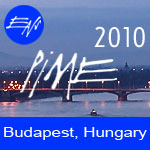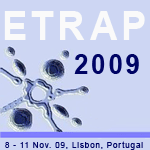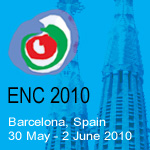

SNE news: the latest from the Spanish Nuclear Society
The Consejo de Seguridad Nuclear (CSN), Spain’s nuclear regulatory body, recently agreed unanimously to submit a report to the government with a non-binding recommendation that the Santa María de Garoña nuclear power plant should operate beyond its original 40-year-lifespan and this for a further period of 10 years. This decision was taken on 8 June after three years of analysis of the documentation that was presented on the plant, and following six plenary meetings of the CSN. The results of the analyses were detailed in the working programme that the CSN published on 16 April 16.
Santa María de Garoña is a 466 Megawatts capacity BWR nuclear power plant located in the north of Spain, in the province of Burgos. It was constructed by General Electric USA (GE) and first started operating in 1971. In accordance with Spanish legislation, for the license renewal of the NPP Endesa and Iberdrola, who operate the plant under a joint venture known as Nuclenor, launched an investment plan some years ago. This was based upon a lifetime extension of the plant, with a continuously updated programme that conforms with the rules applicable to the construction of a new NPP.
The Santa María de Garoña NPP was among the first 10 NPPs to be built in Europe and ranks 50th out of the 440 operating worldwide when it comes to achieving its operational targets. In the US eight plants that are similar to Garoña NPP and of a similar operating age have already obtained permission to extend their operational lifetime to 60 years. One of these plants, 'Oyster Creek,' is already more than 40 years old.
The CSN recommended the extension on condition that Nuclenor implement a series of measures by 2013 to improve safety at the plant. As the report is a non-binding recommendation the government will now have to decide by 5 July whether it will extend the authorisation to Nuclenor to operate the plant until 2021.
An important debate on the government’s decision has begun in Spain because, according to Teresa Dominguez, President of Foro Nuclear (the Spanish nuclear industry forum): “An extension of the operating permit of Garoña would provide a benchmark for the other nuclear installations in our country.”
The Spanish Nuclear Society outlined the opinion of its members on the subject in a report that you can read at: www.sne.es
For more information on this topic, visit www.csn.es and the web sites of the institutions and companies mentioned in this report.

On May 26, the traditional Spring Meeting of the SNE was held in the Industrial and Telecommunications Engineering School of the University of Cantabria. The aim of this meeting was to present the SNE's activities to university students in the region with a view to showing them the vitality of the Spanish nuclear sector within an international context.
The inaugural presentation was given by Javier Tovar, Director of Organization and Quality of ENSA, the main nuclear sector company in the area, and José Emeterio Gutiérrez, SNE’s President, in the presence of the Dean of the University of Cantabria, which emphasised the importance of this type of meeting when it comes to linking universities with the industry.
Representatives of the main Spanish engineering companies that are active in nuclear sector also participated in the session and showed that the Spanish nuclear industry has been able to maintain its position despite a lack of possibilities in the national market. This was achieved by prospecting new markets and by showing a high level competitiveness in different sub-sectors like fuel fabrication, engineering and others.
The Director of the Industrial and Telecommunications Engineering School of the University of Cantabria (Eduardo Mora) and the General Director of Industry of the Comunidad de Cantabria (Marcos Bergua) closed the session by emphasising the importance of communicating with university students, who represent some of the future professionals that will one day work for these companies.

The aim of the Annual Event of the New Energy Technologies Chair 'Rafael Mariño' at the Polytechnic University of Comillas (Madrid) is to discuss in-depth the situation with regards to the different energy sources that are essential for the country’s development and to highlight the problems that each source faces.
This year’s event was devoted to nuclear energy and its role as an energy model for achieving sustainable development with minimal environmental impact. Several European countries - including France, the UK, Italy, Finland and Russia – as well as Asian countries like Japan, China and India, are seriously considering nuclear energy as an absolutely essential energy option (together with the renewable energies). So too are the US.At the same time, the participation of fossil resources in the mix is decreasing. Within this context the meeting sessions highlighted the different aspects of nuclear energy and its related technology, showing clearly its capacity for solving the problems that can occur.
The event was divided in five modules during which the following topics were discussed: Waste Management and Transport; Transmutation and Reprocessing; Nuclear Power Plants: Operational Life -time Management; the Spanish Nuclear Energy Industry: Socio-economic aspects of nuclear energy and Generation III Nuclear Power Plants.

The 35th Annual Meeting of the Spanish Nuclear Society will be at the Barceló Renacimiento Hotel, in Seville, from 28 - 30 October, 2009. The Technical Committee has already closed the period allowed for receiving abstracts and the final version papers must be submitted before to 15 July. The meeting agenda includes both plenary and technical sessions.
The Plenary sessions, which include opening, closing and special sessions, will focus on current important issues as follows:
Plenary 1: 29 October
Spanish Energy Perspectives for 2030: This session, in which senior representatives of the different energy resource sectors will participate, will focus on the complementarity between renewable energies and nuclear energy.
Plenary 2: 30 October
New Nuclear Programmes: Representatives of the companies and institutions involved in new nuclear programmes will present the innovative aspects of these programmes.
The Technical Sessions will continue throughout all three days of the Annual Meeting and will be grouped by topic. During these sessions nuclear professionals from Spain and other countries will showcase their developments. The Technical topics to be covered at the 35th Annual Meeting are the following: fuel, communications, dismantling, fusion, R+D, engineering, maintenance, nuclear medicine and other applications, new reactors, NPP operation, management and human factors, radiological and environmental protection, nuclear waste and nuclear safety.
More than 220 presentations are expected to be given during the Technical Sessions this year. The Monograph Sessions are devoted to specific topics and bring together specialists from all over the world. The agenda topics here are:
-
Long-term operation
-
Impact on the American nuclear industry of the DOE activities
-
Forward-looking markets
-
Public acceptance of the nuclear energy
-
Nuclear power plants staff training
-
Innovation in waste management
The Technical programme will conclude with a series of courses entitled Learn more about that deal in a very practical way with topics of particular interest. This year the courses on offer are:
In the commercial exhibition that will take place in parallel during the three days of the meeting more than twenty companies and institutions related to the nuclear industry, nuclear research and services sectors will present their main innovations. The exhibition will also be held at the Barceló Renacimiento Hotel.
|









